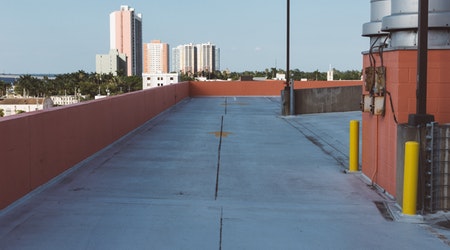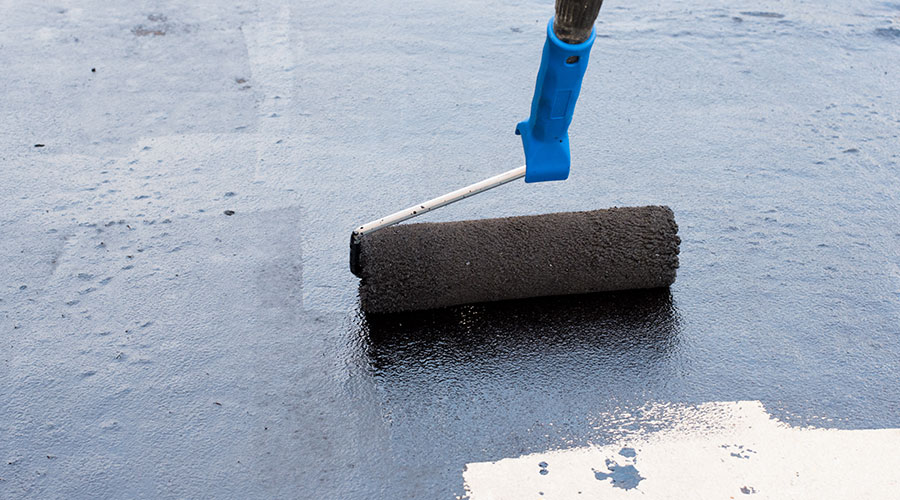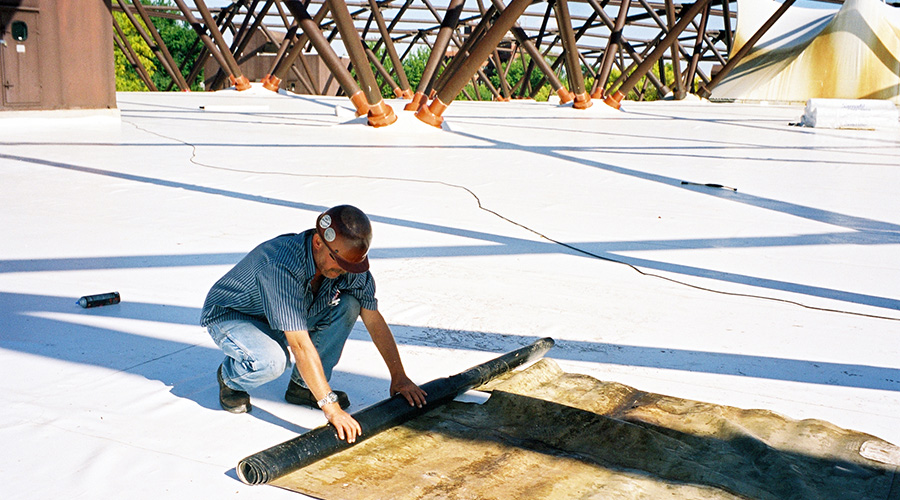Get Involved Early in Roof Design Process
Maintenance and engineering managers are uniquely qualified to provide specific information about the building and rooftop that are critical to post-installation activities, so they should get involved with the design process for the roof system and the PV system. Doing so can pay dividends in terms of maintenance and repairs.
For example, proper design of the roof and PV system results in accessibility to critical components, such as drains that need to remain clear and mechanical units that require filter changes. It would be impractical if a PV installation blocked access for maintenance and repair of air conditioners, antennas, skylights, roof hatches and drains.
One issue managers must pay close attention to is roof penetrations. Many rooftop PV installations are touted as non-penetrating because system manufacturers want to reduce the potential for leaks from improper penetrations. But ballasted, non-penetrating PV systems require at least one penetration to bring electrical conduit into the building.
Managers also need to ensure that ballasted racking systems are secured for two reasons: wind and abrasion. A few strategically placed physical attachments can improve the wind resistance of a PV array. It also is important designers use physical attachments to prevent abrasion of a roof membrane for installations using non-penetrating racks. Properly located attachments can prevent movement of the racking system and resulting membrane abrasion.
Fine-Tuning The Process
Daily monitoring of the PV system's electrical output also affects maintenance. This process is not a rooftop inspection. Instead, it is done by computer. By monitoring the system's output and noting deviations, managers can determine if an array is functioning properly.
Besides planning for maintenance, managers also need to notify the local fire department that a photovoltaic system is in place on a building. Local fire codes might include requirements for ladder placement and rooftop access. It is best to follow the current International Fire Code (IFC) for requirements for placement of rooftop PV systems. The IFC aims to maximize the safety of fire fighting personnel, as well as the ability to control and extinguish a fire.
It also is prudent to notify the facility's insurance carrier. Adding a rooftop PV system might trigger requirements or insurance riders, as well as increase the building's overall value. Updating the policy is a good idea when organizations make major changes to a building.
Finally, managers need to make sure building owners, architects and contractors understand that roof and PV system maintenance is critical for ensuring the long-term performance of these two important building components.
James R. Kirby, AIA, is vice president of sustainability with The Center for Environmental Innovation in Roofing which is headquartered in Washington, D.C.
Related Topics:















